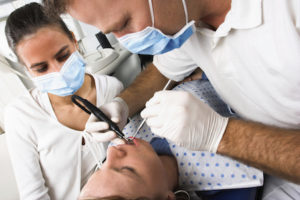 There are many downsides to getting a tooth extracted. A full extraction is very hard on your jaw bone and gums. In a traditional extraction, the entire tooth including the root is removed. This can cause bone loss in the jaw, which can affect biting and chewing. Anything that affects your bite and ability to process food is hazardous to your health.
There are many downsides to getting a tooth extracted. A full extraction is very hard on your jaw bone and gums. In a traditional extraction, the entire tooth including the root is removed. This can cause bone loss in the jaw, which can affect biting and chewing. Anything that affects your bite and ability to process food is hazardous to your health.
Luckily there is a new method called partial extraction therapy that does not have these downsides. This is a revolutionary new therapy, and we are among the frontrunners in its use. Studies have proven that partial extraction therapy has many benefits for patients.
Partial Extraction Therapy Defined
Partial extraction therapy is just what it sounds like. Not all of the tooth is extracted. Instead, the root that is naturally embedded deep within the jawbone is left intact and submerged beneath the gum. Only the decayed part of the tooth is removed.
Benefits of Partial Extraction Therapy
There are many benefits to partial extraction therapy. Patients experience less bone loss and better gum health when they get a partial extraction. It also provides the perfect bed for a dental implant, which is the preferred way to replace a missing tooth, especially if you have just one or two.
When Is It Used?
Partial extraction therapy can be used anytime that a patient needs a tooth extracted. Even if the patient will not be getting a dental implant after the extraction, leaving the root in place has many other benefits that should not be ignored. Unless the root is unhealthy or damaged, we always try to preserve the root with partial extraction therapy.
Do you need a tooth extracted and replaced with a dental implant? Contact us today for more information or to schedule an appointment.
